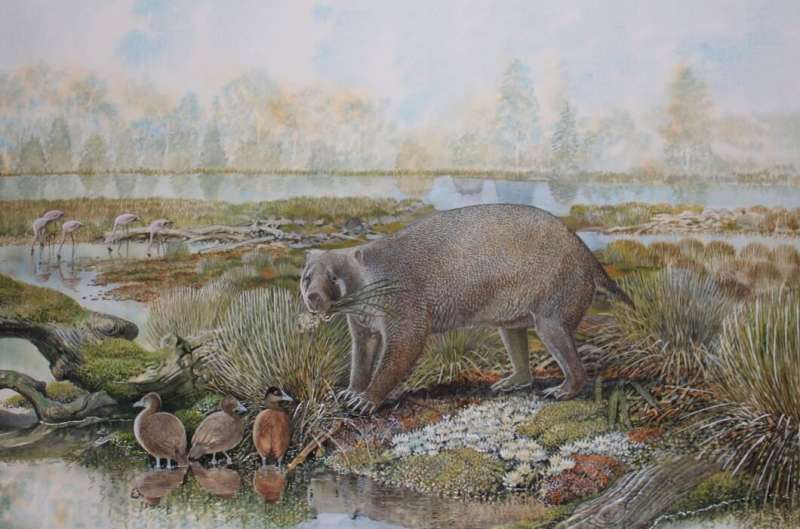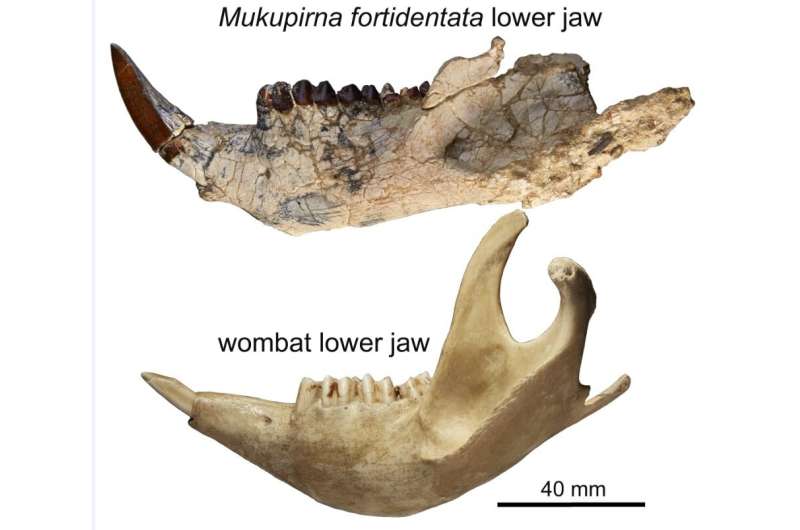This article has been reviewed according to Science X's editorial process and policies. Editors have highlighted the following attributes while ensuring the content's credibility:
fact-checked
reputable news agency
proofread
Australian scientists piece together toothy wombat ancestor

A chunky wombat ancestor with a powerful bite wandered Australia's once-lush Outback around 25 million years ago munching on fruit and nuts, fossils found by Australian scientists have shown.
A team of scientists from Flinders University pieced together fossils uncovered in Australia's remote Northern Territory to reveal the long-extinct marsupial named Mukupirna fortidentata.
The paleontologists also identified an ancient possum named Chunia pledgei, which they said had "bizarre nut-cracker teeth".
"These curious beasts are members of marsupial lineages that went extinct long ago, leaving no modern descendants," said Arthur Crichton, from Flinders University's Paleontology Laboratory.
"Learning about these animals helps put the wombat and possum groups that survive today in a broader evolutionary context."
The fossils were uncovered in several digs over the past decade, enabling the team to reconstruct the archaic animals back in the laboratory.
The wombat-like creature boasted a powerful bite, likely dined on tough fruits and nuts and was thought to weigh up to 50 kilograms (110 pounds), making it one of the largest marsupials alive at the time.
The creature is linked to Mukupirna nambensis—discovered in 2020—a giant relative that would dwarf most of today's wombats.

Although it was unclear what drove the beast extinct, it disappeared during a period of changing climate as ancient forest regions in Australia's center became increasingly arid, said Professor Gavin Prideaux, director of the university's paleontology lab.
"While wombats were very successful over the succeeding period, the mukupirnids seem to have gone extinct sometime before the end of the late Oligocene (25-23 million years ago)," Prideaux said.
Less was known about the early possum of the Ektopondontidae family because it was a "tantalizingly rare" find, but it sported a lemur-like face with "very strange teeth", Crichton said.
© 2023 AFP





















